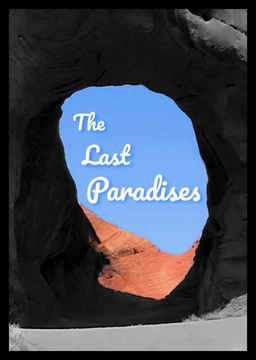








Difficulty:
 Intermediate
Intermediate
USA
This segment looks at the advantages and disadvantages of swarm fish and loner fish, providing insight into their coloration and behavior. Spectacular footage reveals twobar sea bream, trumpet fish, barracudas, and harlequin sweetlips.
Difficulty:
 Intermediate
Intermediate
USA
Green sea turtles (the largest hard-shelled sea turtle) and whale sharks (the largest shark and fish overall) are featured in this segment. We also encounter a langouste, otherwise known as a rock lobster, and a moray eel lurking in their coral reef habitat.
Difficulty:
 Intermediate
Intermediate
USA
We learn about the thousands of kilometers that humpback whales travel from their summer habitat in the polar regions to the tropical or subtropical waters where they spend the winter. Their multi-versed songs and the markings on their flukes are also discussed.
Difficulty:
 Intermediate
Intermediate
USA
Marine mammals are the focus of this segment on coastal sea life. Humpback whales mostly swim along the coasts, whether in the Northern or Southern Hemisphere. Seals are semi-aquatic and try to stay as close to the coast as possible, though they'll search for prey in depths of up to forty meters.
Difficulty:
 Intermediate
Intermediate
USA
California sea lion communication, mating habits, and past and present threats to their survival are discussed. This segment additionally features amazing aerial photography of their rocky coastal habitats.
Difficulty:
 Intermediate
Intermediate
USA
The video starts with information about coastal geology and the evolution of birds. It includes amazing footage of white storks, wildebeest, as well as zebras in East Africa's Serengeti region.
Difficulty:
 Intermediate
Intermediate
USA
The focus of this segment is on animals of the African savanna. We get to see giraffes and elephants, the largest of the land creatures, as well as cheetahs, the fastest.
Difficulty:
 Intermediate
Intermediate
USA
Rhinoceroses, or rhinos for short, are the largest land animals after elephants. Five species remain (two in Africa and three in Asia) and all are endangered as a consequence of the illicit trade of their horns. The importance of rivers is another focus of this segment.
Difficulty:
 Intermediate
Intermediate
USA
The series draws to a close with footage of apes, the most direct ancestors of humans. The narrator nicely sums up the meaning of evolution and man's place in nature.
Difficulty:
 Adv-Intermediate
Adv-Intermediate
United Kingdom
A greeting by Michael Reynolds, Earthship Biotecture and THE Garbage Warrior. See more at garbagewarrior.com – and order the DVD.
Difficulty:
 Intermediate
Intermediate
Australia
The Great Barrier Reef: it’s one of the most iconic, most beautiful and most diverse locations on earth. Stretching from Cape York in northernmost Queensland down to Bundaberg on the central coast, this enormous living organism (the world’s largest) is nothing short of breathtaking.
Difficulty:
 Intermediate
Intermediate
Australia
Every tourist that visits the Great Barrier Reef contributes in a small way to the protection of this vast and remote wilderness. We are encouraged to experience for ourselves the wonders of this unique underwater ecosystem, and come away with a deeper understanding.
Difficulty:
 Intermediate
Intermediate
United Kingdom
TED: Charlotte Weir invites the audience to think about the future and work towards solutions. TEDx is a program of local, self-organized events that bring people together to share a TED-like experience. Get involved!
Difficulty:
 Intermediate
Intermediate
USA
The Ocean Cleanup is a Netherlands-based, non-government environmental engineering organization that develops technology to extract plastic pollution from the oceans. They have developed a "passive" cleanup system that takes advantage of the natural oceanic forces of wind, water, and currents.
Difficulty:
 Intermediate
Intermediate
USA
This December over 190 nations will gather in Paris to discuss a new global agreement on climate change. The talks are called 'COP21' which stands for the 21st annual Conference of the Parties, but what does all that mean and why is any of it important? This film will not only give you the facts but help you understand why it matters to all of us - in less than two minutes!
Are you sure you want to delete this comment? You will not be able to recover it.